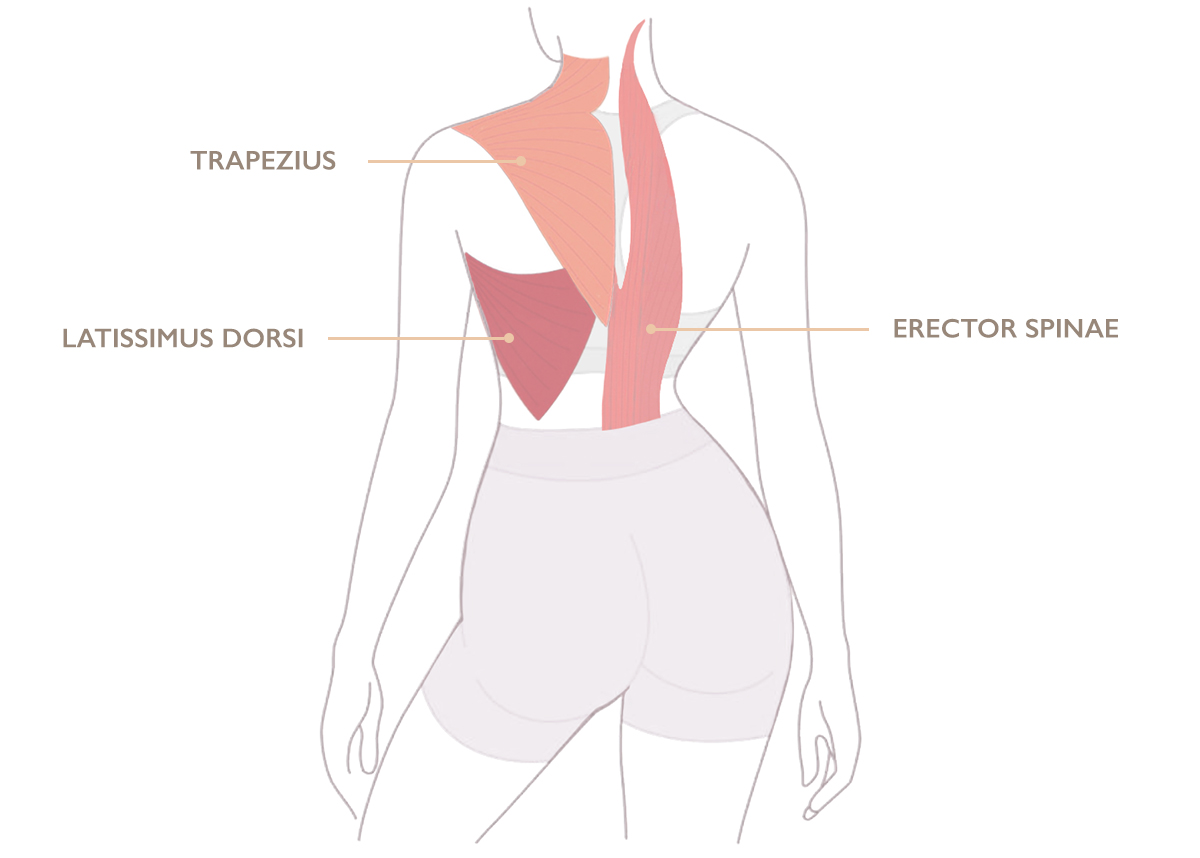A strong back is imperative for maintaining proper posture, good core strength, and stable shoulders. Strengthening your back helps you to perform everyday tasks with with ease (e.g. lifting, bending), improves athletic performance, and can help reduce back pain.
<< Spotlight >>
Falling down is part of life. Getting back up is living.
Back Anatomy
Training the back can be boiled down to three major areas. If you train these, you'll essentially cover all your bases. So here's an easy guide to the key back muscles that you'll want to target.
There are many different muscles in your back. In total there are 40 muscles in the back, consisting of 20 muscle pairs (one on each side of the back). However, there are three main muscles in the back you need to know.
Trapezius (traps). This large diamond-shaped muscle is located at the top of the back. It is divided into three parts – the upper, mid, and lower traps. The upper trapezius elevates the shoulders, the middle trapezius brings the shoulder blades backwards and helps keep the shoulder stable, while the lower trapezius depresses the shoulders and helps stabilize the upper and middle spine to support proper posture. Often people focus on the upper traps. However, for a strong, stable back and shoulders, and to support good posture, it is important to train the middle and lower trapezius.
Latissimus dorsi (lats). The lats are one of the biggest muscles in the body. Broad, flat and triangle-shaped, this muscle stretches out to the sides and covers the width of your middle and lower back. Its function control the movement of your shoulders and is involved in pulling things toward your body with your arms, such as opening a door. This muscle is targeted with pulling exercises such as pull-ups.
Erector spinae. Also called the spinal erectors, this is a group of long, deep rope-like muscles that run the length of the vertebral column. Their main function is to support the spine, as well as bend the back backwards (back extension), bending to the side (lateral flexion), and turning the head. This muscle is part of the core, and play an integral role in stabilizing the spine and supporting good posture.

Main Types of Back Exercises
A holistic workout should include different types of back exercises. Back exercises can be roughly dived into 3 categories.
Back Exercise Library
Back & Co
For workout ideas check out our workout plans and the best exercises for different body parts.

